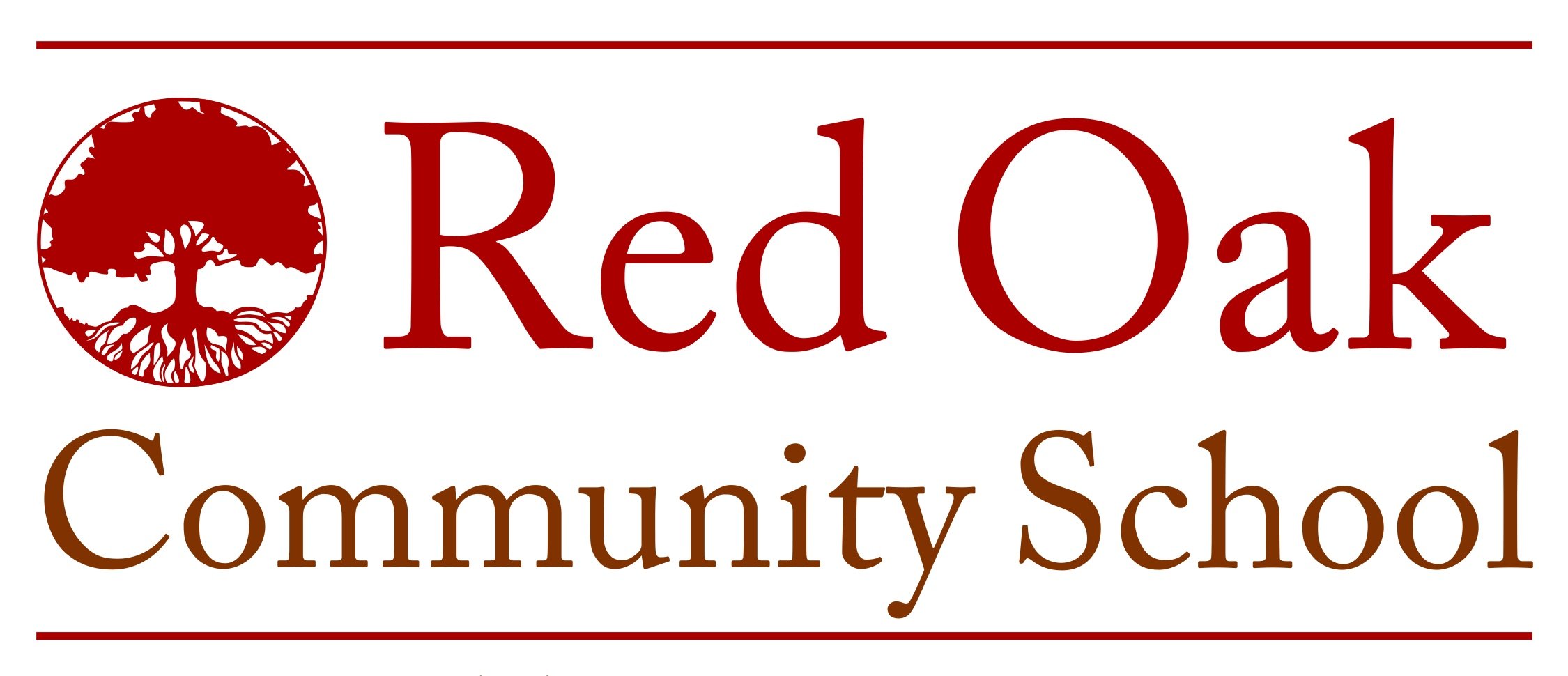Learning to Fly (in partnership with the PAST Foundation and Ohio School of Falconry)
(Thanks to first year ROCS mom Anne Trader for her reporting on this post!)
Ms. Bethany and her new friend.
Just before heading off for winter recess, Red Oak students, staff, and parents got to enjoy a special visit from the Ohio School of Falconry. The visit was arranged by Bethany Filipow, our teacher of all things science and technology.
Over the fall Bethany attended a professional development workshop offered by the Past Foundation. The session addressed the concept of aviation and was geared for middle school students. During the workshop, educators were given a set of PBL (Problem Based-Learning) activities to test drive in their classrooms and use as jumping off points to create a unit of study around a problem that was meaningful to their students.
Planning the unit she wanted to teach our students, Bethany reflected on Red Oak's mission to connect students with the natural environment and decided to teach students about flight and biomimicry. Through experimentation and observation students completed activities to teach them about air pressure, Bernoulli’s principle, the forces of flight, and factors that impact lift and drag.
During the course of this unit, Bethany met Joseph (aka Joe) Dorian from the Ohio School and Falconry and realized he and his birds could help her connect her aviation-related lessons together.
Joe did an amazing job of engaging the students and connecting with their current studies. One of my favorite things about Red Oak is that students are encouraged to pursue their interests and to see where their questions lead them. Often students will spend a month or two on one subject such as bees, native plants, or architecture. This extended time on one unit allows the class to richly engage with the world around them without rushing from one topic to another, encouraging a depth and a breadth of knowledge often discouraged by our hurry-up-and-move-along world. This learning model also encourages staff to be creatively engaged in learning alongside the students because they are working with an ever-changing, developing curriculum sparked by students interests and questions. It is a reminder to parents to do the same.
Joe brought two owls, two falcons, and a hawk to share with us. His presentation covered aspects of history, biology and physics. I learned that owls have very small brains because most of their head is filled with their eye tubes. I also learned that although falconry is often thought to originate in Europe about 5,000 years ago, there is a tapestry from Japan showing a Japanese falconer that dates back 6,000 years.
Joe and a beautiful Peregrine Falcon like the one he read about as a kid in My Side of the Mountain.
Joe treated the birds with kindness and respect, both important virtues taught at Red Oak. He said that the “sport is built on relationship, friendship, and trust. The foundation is caring for one another.” This is true of Red Oak as well. Since our family joined at the beginning of this school year, I have found it to be a school built on relationship, friendship, and trust with a foundation of caring for each other in our community and the community around us. These teachers know each student at the school and great them by name each morning. They know their strengths and weaknesses, they care about their interests and helping them figure out who they want to be as much as what they want to do with their lives. They also model an amazing care for the community around them by encouraging students to support CRIS and other organizations and to think critically about what is going on in the world around them and how to be involved.
Joe told us about reading My Side of the Mountain, a book about a boy who ran away and lived in the woods with a peregrine falcon he trained. Reading the book, Joe knew he wanted to be a falconer. He encouraged the kids to read and dream when they are young and throughout their lives. Dreaming is what these parents and staff did when they started this school a few years ago, and I cannot wait to see where it takes them and these kids in the future.
For the time being, after Joe's visit students began their design to create an aircraft using biomimicry to help it fly. They created a blueprint in which they labeled the parts and their sizes. Afterwards they named their aircraft, described who would use it, how it is helpful, and the animal(s) they used to inspire their creations. The final step will be for students to create a 3-D model of their aircraft making use of reusing materials instead of them heading to a landfill.



